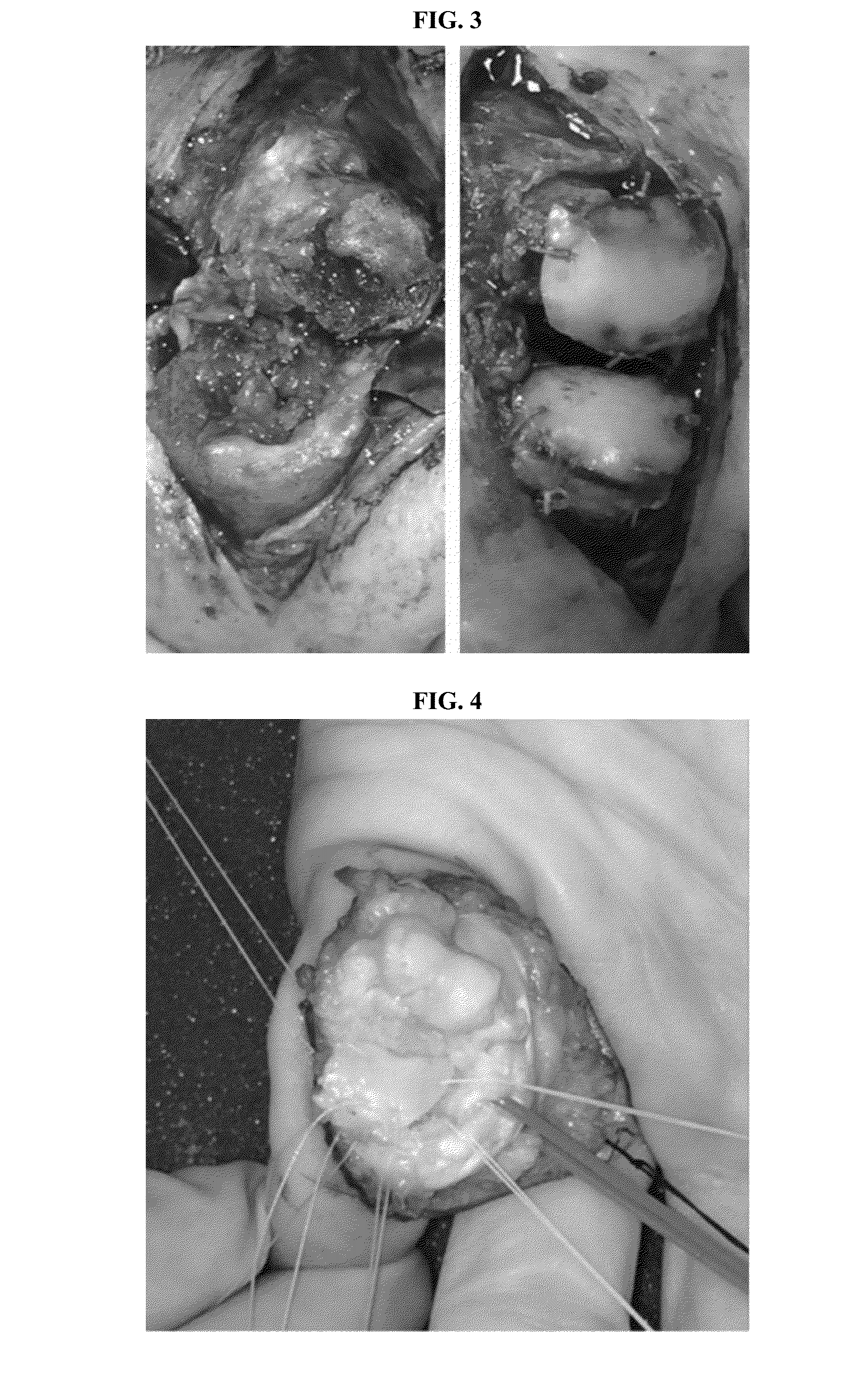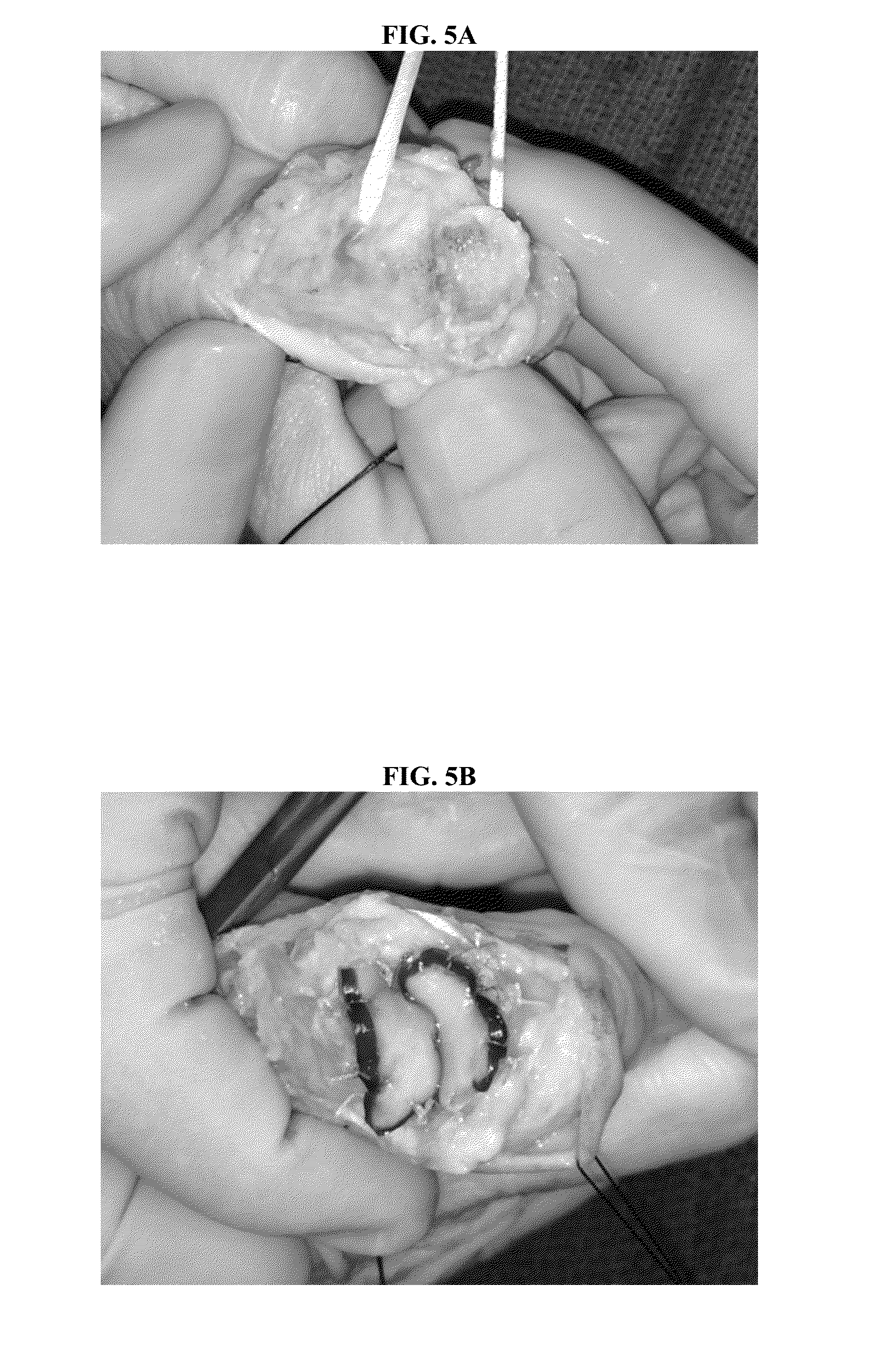Meniscus for joint reconstruction
a meniscus and joint technology, applied in the field of meniscus for joint reconstruction, can solve the problems of affecting the function of hand muscles,
- Summary
- Abstract
- Description
- Claims
- Application Information
AI Technical Summary
Benefits of technology
Problems solved by technology
Method used
Image
Examples
example 1
A Novel Use of Meniscus for Small Joint Reconstruction of the Hand
[0096]Small joint arthroplasty of the hand has mixed outcomes and no ideal implant has been developed. Various materials have been used in the past with mixed results. One of the classic reconstruction modalities is the silicone implant however one of the major drawbacks is that up to 40% of implants will break over long term follow up. Pyrolytic carbon is another synthetic substance which has been used with continued mixed results. This invention provides a novel approach for small joint reconstruction: using cadaveric meniscus for joint reconstruction. Meniscus is advantageous as it is amenable to a synovial environment, can be revascularized, has a low metabolic demand, and is malleable.
[0097]The inventor reconstructed three metacarpophalangeal (MCP) and one proximal interphalangeal joint (PIP) in four patients using cadaveric meniscus. Patient demographic, pre- and post-operative pain and range of motion data was ...
example 2
Wrist Salvage of the Radiocarpal Joint Using Cadaver Meniscus
[0102]In the setting of wrist salvage, proximal row carpectomy (PRC) and scaphoidectomy with four-corner fusion (4CF) are effective motion-preserving and pain-relieving therapies. Effective treatment necessitates that the capitolunate joint remains free of osteochondral defects to achieve pain-free motion and healing. In patients with severe arthritis in the capitolunate joint, we propose a novel adjunct for PRC wrist joint salvage using cadaveric meniscus for joint resurfacing. It is an off-the-shelf alternative that is not only malleable but also addresses focal osteochondral effects and restores intra-articular contact stress distributions toward normal levels.
[0103]The inventors reconstructed three radiocapitate joints with osteochondral defects using cadaveric meniscus to facilitate PRC of the wrist and preserve pain-free motion. Patient demographic, pre and post-operative pain and range of motion data was examined as...
example 3
Tissue Engineering Using Cadaveric Meniscus for Arthroplasty of the Hand: Long Term Outcomes
[0106]The use of small joint arthroplasty implants has been tinctured with mixed short and long term outcomes over the past 50 years. There have been several synthetic, non-biological materials developed to help recreate joint function. One classic reconstruction method utilizes silicone implants which initially provide excellent mechanical properties, however over the long term, up to 40% of these breaks or loses function. The ideal reconstruction would provide the biomechanical properties of the joint, but would also be biointegrated or at least biologically inert. One reconstructive approach involves the use of naturally derived human meniscus. As a biomaterial, meniscus is amenable to a synovial environment, it can be revascularized and biointegrated, it has a relatively low metabolic demand, and it is incredibly malleable. Described herein, cadaveric meniscuses are used for small joint r...
PUM
 Login to View More
Login to View More Abstract
Description
Claims
Application Information
 Login to View More
Login to View More - R&D
- Intellectual Property
- Life Sciences
- Materials
- Tech Scout
- Unparalleled Data Quality
- Higher Quality Content
- 60% Fewer Hallucinations
Browse by: Latest US Patents, China's latest patents, Technical Efficacy Thesaurus, Application Domain, Technology Topic, Popular Technical Reports.
© 2025 PatSnap. All rights reserved.Legal|Privacy policy|Modern Slavery Act Transparency Statement|Sitemap|About US| Contact US: help@patsnap.com



